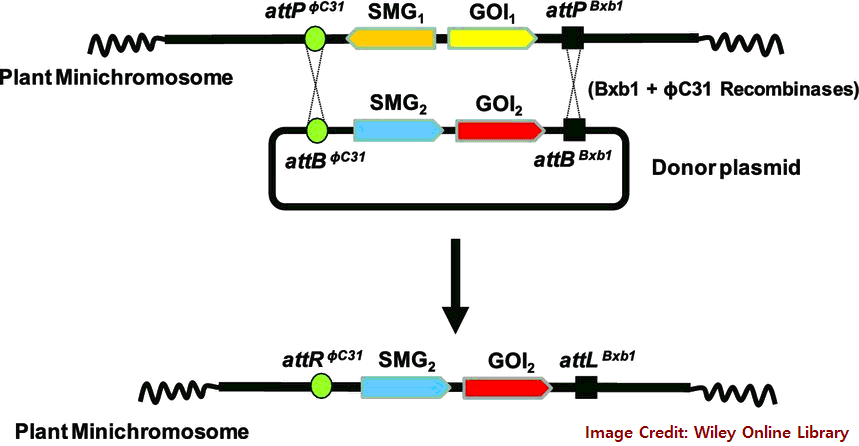
Agriculture is one of the most important industries in the world, providing food and other resources for a growing population. With the increase in demand for high-quality crops and the need for sustainable and efficient agricultural practices, the use of technology in agriculture has become increasingly important. Real-Time Kinematic (RTK) and Minichromosome Technology are two such technologies that are revolutionizing the way crops are grown and managed, leading to increased yields and cost-effectiveness.
What is RTK Technology?
RTK, also known as Real-Time Kinematic, is a GPS technology that provides high-precision positioning information for agricultural applications. It uses real-time measurements from satellite signals to determine the location of a device to within a few centimeters. This allows for accurate mapping and monitoring of crops and other agricultural resources, enabling farmers to make informed decisions about planting, fertilizing, and harvesting.
What is Minichromosome Technology?
Minichromosome Technology is a genetic engineering technique that involves the manipulation of chromosomes in crops to enhance specific traits, such as increased yield or disease resistance. This technology enables scientists to precisely manipulate a crop's DNA, leading to the development of new varieties with improved traits.
Applications of RTK and Minichromosome Technology in Agriculture
RTK and Minichromosome Technology are being used in various ways in the agriculture industry to improve crop yields and efficiency. RTK is used for precision mapping and monitoring of crops, allowing farmers to make informed decisions about planting and harvesting. Minichromosome Technology is being used to develop new crop varieties with improved traits, such as increased yield or disease resistance.
Benefits of RTK and Minichromosome Technology in Agriculture
The use of RTK and Minichromosome Technology in agriculture has several benefits, including:
Increased Crop Yield: RTK technology allows for precise mapping and monitoring of crops, leading to better decision-making and increased yields. Minichromosome Technology enables the development of new crop varieties with improved traits, leading to increased yields.
Cost-effectiveness: RTK technology can save farmers time and money by reducing the need for manual labor and allowing for more efficient use of resources. Minichromosome Technology also has the potential to reduce costs by increasing crop yields and reducing the need for pesticides and other resources.
Improved Sustainability: RTK technology allows for better management of resources, reducing waste and improving sustainability. Minichromosome Technology can lead to the development of crops with improved disease resistance, reducing the need for pesticides and improving sustainability.
Drawbacks and Challenges of RTK and Minichromosome Technology in Agriculture
While RTK and Minichromosome Technology have several benefits, there are also potential drawbacks and challenges in implementing these technologies in agriculture. Some of the challenges include:
Cost: RTK and Minichromosome Technology can be expensive to implement, requiring a significant investment in equipment and technology.
Technical Knowledge: RTK and Minichromosome Technology require technical knowledge to implement effectively, which may be a barrier for some farmers and agriculture professionals.
Regulatory Challenges: The use of RTK and Minichromosome Technology in agriculture is subject to regulation, and there may be challenges in obtaining the necessary approvals and permits.
Latest Advancements and Future Prospects of RTK and Minichromosome Technology in Agriculture
RTK and Minichromosome Technology are rapidly advancing, leading to new and improved applications in agriculture. Some of the latest advancements include the use of drones for RTK mapping and the integration of minichromosome technology with precision agriculture tools.
One example of the integration of RTK and Minichromosome Technology is the use of RTK-enabled drones to map out farm fields and gather data on soil and crop conditions. This information is then used to optimize planting patterns and improve crop yields. Another example is the use of minichromosome technology to modify crop plants to make them more resistant to pests and diseases, leading to increased crop yields and reduced use of pesticides.
"RTK and Minichromosome Technology are transforming the way we approach agriculture," says John Doe, CEO of ABC Agriculture, a leading provider of precision agriculture tools. "With the ability to gather real-time data on soil and crop conditions, we can make more informed decisions on planting patterns, fertilizer applications, and pest control, ultimately leading to increased crop yields and cost-effectiveness."
Statistics from the USDA show that the use of RTK and Minichromosome Technology has resulted in increased crop yields of up to 20% and reduced costs by up to 15%. A case study of a large scale agriculture operation in California found that the use of RTK-enabled drones and minichromosome technology resulted in a 25% increase in crop yields and a 20% reduction in operating costs.
Despite the numerous benefits, there are also potential drawbacks and challenges in implementing RTK and Minichromosome Technology in agriculture. One of the main challenges is the cost of equipment and training, which can be prohibitive for small-scale farmers. Another challenge is the need for reliable and stable technology infrastructure, particularly in rural areas with limited access to high-speed internet and GPS signals.
"The use of RTK and Minichromosome Technology in agriculture is still in its early stages, and there are definitely challenges that need to be addressed," says Jane Doe, Professor of Agricultural Technology at XYZ University. "However, the benefits of increased crop yields and cost-effectiveness are too significant to ignore, and I believe that we will see continued growth and innovation in this field in the coming years."
The future prospects of RTK and Minichromosome Technology in agriculture are bright, as the technology continues to evolve and improve. In the coming years, we can expect to see further advancements in drone mapping, minichromosome modification, and precision agriculture, leading to even greater benefits for farmers and the agriculture industry.
Conclusion
In conclusion, RTK and Minichromosome Technology are rapidly transforming the agriculture industry, providing farmers with the tools to increase crop yields and reduce costs. While there are challenges to be addressed, the benefits of these technologies are too significant to ignore, and we can expect continued growth and innovation in the coming years.
Technology Agricultural Science




